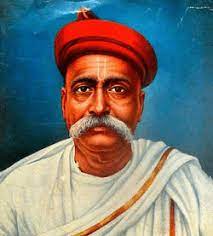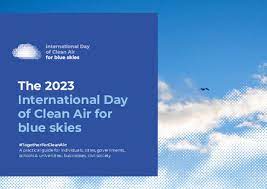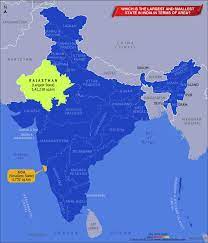
Why in News?
The Prime Minister, Shri Narendra Modi has paid tribute to the illustrious freedom fighter and educationist Bal Gangadhar Tilak on his birth anniversary, which was observed on 23rd July.
Daily Current Affairs Quiz: July 2023
Birth and Early Life
In July 1856, Bal Gangadhar Tilak was born in Ratnagiri, Maharashtra. He was a freedom fighter and a lawyer, but he became more popularly known as Lokmanya(which means “accepted by the people as their leader”) Tilak, a title that reflected the immense respect he garnered among the people.
Educationist and Social Reformer
Tilak’s dedication to education prompted him to co-found the Deccan Education Society with his partner Gopal Ganesh Agarkar and others in 1884. Through this society, he played a key role in establishing the renowned Fergusson College in Pune in 1885. Tilak was the first leader of the Indian independence movement
Ideology and Slogan
Deeply rooted in his devout Hindu beliefs, Tilak drew inspiration from Hindu scriptures to awaken the spirit of resistance against oppression. He was a staunch supporter of self-rule, or “swarajya,” thinking that complete independence was the only way to attain growth and wealth. “Swaraj is my birthright, and I shall have it!” became a rallying cry for the freedom of India struggle.
Father of Indian Unrest
Tilak’s unwavering nationalist ideals earned him the moniker “Father of Indian Unrest” in the book “Indian Unrest,” written by English writer Valentine Chirol. He emphasized the need for a cultural and religious revival to complement the political movements. Furthermore, he played a significant role in popularizing the Ganesh Chaturthi festival in Maharashtra and advocated the celebration of Shiv Jayanti on the birth anniversary of Chhatrapati Shivaji, the revered monarch.
Political Life and Surat Split
As one of the earliest and most vocal proponents of complete independence or “swarajya” , Tilak was a prominent figure in India’s political landscape. He was part of the Lal-Bal-Pal trinity of hardline leaders, together with Lala Lajpat Rai and Bipin Chandra Pal. In 1890, he joined the Indian National Congress (INC), where he rose to prominence.
The Surat Split in 1907 divided the INC into two groups – the Extremists and the Moderates. The Extremists, led by Tilak, Lal, Bal, and Pal, sought an end to British tyranny through protests, while the Moderates aimed for administrative and constitutional reforms. The split occurred when Rasbehari Ghose was announced as president instead of Tilak or Lajpat Rai, leading to violent confrontations.
Contribution to the Freedom Movement
Tilak played a crucial role in propagating swadeshi movements and encouraging people to boycott foreign goods, promoting the use of indigenous products and self-reliance.
Tilak launched the Indian Home Rule campaign in 1916, drawing parallels with the Irish Home Rule campaign. This movement, led by Annie Besant and Tilak, laid the groundwork for India’s independence struggle, especially among the educated English-speaking upper-class Indians.
In April 1916, Tilak founded the All India Home Rule League in Belgaum. This organisation vigorously promoted the cause of self-rule and freedom in Maharashtra (excluding in Bombay), the Central Provinces, Karnataka, and Berar.
Tilak’s efforts to foster Hindu-Muslim unity in the nationalist struggle culminated in the Lucknow Pact of 1916, an agreement between the INC headed by Tilak and the All-India Muslim League led by Muhammad Ali Jinnah.
Tilak spent six years in Mandalay Prison between 1908 and 1914 for defending the conduct of revolutionaries Khudiram Bose and Prafulla Chaki. These two young revolutionaries had attempted to assassinate District Judge Mr. Kingsford by throwing bombs at his carriage.
Books written by Bal Gangadhar Tilak
| Publication | Description |
| “The Arctic Home in the Vedas” | Tilak proposed that the Vedas were composed in the Arctic region and brought south by Aryan bards after the last ice age. He suggested a novel method to determine the exact time of the Vedas. |
| “The Orion” | Tilak attempted to calculate the Vedic period using the positions of different Nakshatras mentioned in the Vedas. |
| “Shrimadh Bhagvad Gita Rahasya” | While imprisoned in Mandalay, Tilak wrote this work, analyzing Karma Yoga in the Bhagavad Gita, considered a gift from the Vedas and Upanishads. |
Legacy and Passing
Tilak’s influence extended beyond politics and education. He contributed significantly to India’s literary landscape through his newspapers, the Marathi weekly “Kesari” and the English weekly “Mahratta.” Moreover, his writings, such as “Gita Rhasya” and “Arctic Home of the Vedas,” continue to inspire generations.
Bal Gangadhar Tilak breathed his last on 1st August 1920, leaving behind an enduring legacy as a visionary freedom fighter and educationist, whose ideas and contributions continue to inspire the nation.





